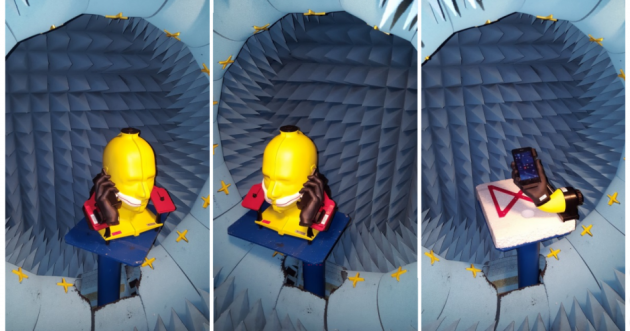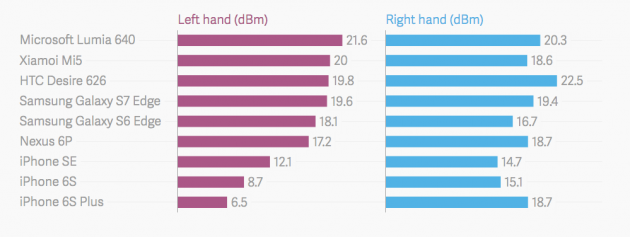Why do smartphones function better in one hand than in another?
The scientists tested how well different smartphones receive radio signals and how to place gadget in order to improve connection. Spoiler: if you have an iPhone, hold it with your right hand near the right ear during the call.
For the most ordinary users smartphones are small black boxes that function by magic. But the principle of operation is quite simple: the smartphone catches and sends invisible signals, allowing you to surf the Internet and stay in touch with your family and friends. Antenna is installed inside the case during the production of the device that receives radio signals.
Due to the fact that currently all the antennae are fixed inside the smartphones their effectiveness is highly decreased. The owners of these gadgets have no idea where the antenna is placed inside the device and can accidentally cover it by hand. You also don't get such information in the store, because each producer places the antenna at his own will. As the result, antenna functioning and connection greatly depend on how and where you hold the gadget.
In order to check efficiency of various smartphones, scientists of Aalborg University, Denmark placed different devices in purpose-made test boxes allowing to measure the signal level. The result of the research consisted of the report arranged under the supervision of the Nordic Council of Ministers.

Your phone receives and transmits a signal that it gets from the cell station. The most logical way to measure the quality of voice calls is to identify the signal level that the device sends to the nearest cell station, because it is usually the weakest link in a telephone conversation.
You can observe the data obtained from the research in the diagram below. Users held smartphones of popular brands in right and left hands during the call with the frequency of signal about 900 MHz (this is the prevalent frequency to make calls in the most parts of the world). The stronger the signal is, the better the gadget transfers the conversation.

As you can notice, iPhone has introduced low calls quality, no matter in what hand the user holds it (especially old models). But when it is in your left hand applying to the left ear, the gadget functions worse. This can be explained by two reasons: in this position the barrier between an antenna and wireless signal increases or iPhone antennae are worse than in other smartphones.
The second part of the experiment is the data transfer quality testing. The scientists measured the lowest index of power, transmitted from the cell station to the phone signal, which is required to view data in the Internet.
The lower signal power the smartphone has to transmit, the better the device manages to do it. It doesn't matter at all in what hand you hold it.
Even in this part of the experiment the majority of iPhones proved to be less effective than its competitors. The full report and detailed information about other models of smartphones can be found here
If you use the smartphone in places where the signal level is high enough, you won't notice the difference. But in small towns, on the road, in the countryside it is not the same. That’s why if you notice that the call quality is poor, take the phone in the other hand. Or even better turn on the speaker phone.